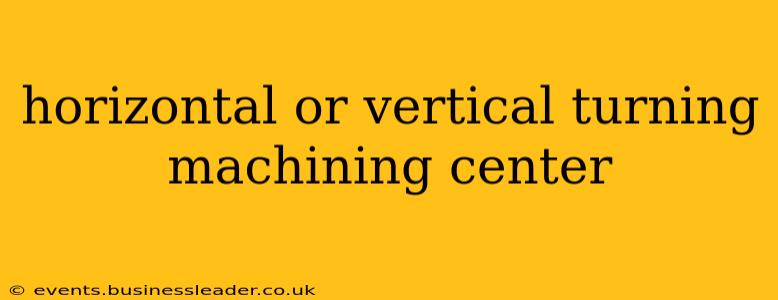Choosing between a horizontal or vertical machining center (HMC or VMC) is a critical decision for any manufacturer. Both offer powerful capabilities for complex part machining, but their distinct designs cater to different applications and workpiece characteristics. This comprehensive guide will explore the key differences, helping you determine which machine best suits your specific needs.
What is a Horizontal Machining Center (HMC)?
A horizontal machining center features a horizontally oriented spindle, meaning the cutting tool rotates parallel to the table. This configuration is particularly well-suited for machining large, heavy parts, offering advantages in terms of chip management and access to multiple sides of the workpiece. The horizontal orientation often allows for greater rigidity and stability during heavy cutting operations.
What is a Vertical Machining Center (VMC)?
A vertical machining center utilizes a vertically oriented spindle, with the cutting tool rotating perpendicular to the table. VMCs are generally more versatile and easier to program, making them popular for a wider range of applications, particularly those involving smaller, less complex parts. Their design often allows for easier access to the workpiece for setup and tooling changes.
HMC vs. VMC: Key Differences
Several key factors differentiate horizontal and vertical machining centers:
| Feature | Horizontal Machining Center (HMC) | Vertical Machining Center (VMC) |
|---|---|---|
| Spindle Orientation | Horizontal | Vertical |
| Part Handling | Often better suited for larger, heavier parts | Generally better for smaller, lighter parts |
| Chip Management | Generally better chip evacuation due to gravity | Can require more sophisticated chip handling systems |
| Programming | Can be more complex | Generally easier to program |
| Accessibility | Can be less accessible for tooling changes | Easier access to the workpiece for setup and tooling |
| Rigidity | Typically offers higher rigidity | Can be less rigid, especially during heavy cutting |
| Cost | Generally more expensive | Typically less expensive |
| Applications | High-volume production, large parts, heavy cuts | Wide range of applications, smaller parts, prototyping |
What are the Advantages of a Horizontal Machining Center?
- Improved Chip Management: The horizontal spindle allows gravity to assist in chip removal, minimizing the risk of chip build-up and improving machining efficiency.
- Enhanced Rigidity: The horizontal configuration often provides superior rigidity, crucial for heavy-duty cutting operations and achieving high precision.
- Better for Large Parts: HMCs are ideal for machining large, complex parts where accessibility from multiple sides is necessary.
- Pallet Systems: HMCs frequently integrate with pallet systems for automated workpiece loading and unloading, increasing productivity.
What are the Advantages of a Vertical Machining Center?
- Easier Programming: VMCs are typically easier to program, reducing setup time and increasing overall efficiency, especially beneficial for smaller shops or those with less experienced machinists.
- Improved Accessibility: The vertical design allows for easier access to the workpiece for loading, unloading, and tooling changes.
- Greater Versatility: VMCs can handle a broader range of applications and part sizes compared to HMCs.
- Lower Initial Cost: VMCs generally have a lower initial purchase price than HMCs.
Which Machining Center is Right for Me?
The optimal choice depends entirely on your specific needs and application. Consider these factors:
- Part Size and Weight: For large, heavy parts, an HMC is often the better choice. For smaller, lighter parts, a VMC is usually sufficient.
- Production Volume: High-volume production often benefits from the automation capabilities of HMCs.
- Machining Complexity: For complex parts requiring multi-sided machining, an HMC might be preferable. Simpler parts can be efficiently machined on a VMC.
- Budget: VMCs generally have a lower initial investment cost.
- Operator Skill Level: VMCs are typically easier to program and operate.
What type of parts are typically machined on a Horizontal Machining Center?
HMCs are frequently used for machining large and complex parts like engine blocks, transmission housings, and aerospace components. The horizontal spindle and greater rigidity make them well-suited for these demanding applications.
What type of parts are typically machined on a Vertical Machining Center?
VMCs are commonly used for a diverse range of parts including smaller components, molds, dies, and prototypes. Their versatility and ease of use make them popular across various industries.
By carefully considering these factors, you can make an informed decision about which machining center—horizontal or vertical—is best suited to enhance your manufacturing capabilities and achieve your production goals. Remember to consult with experienced machining professionals for personalized guidance based on your specific requirements.
